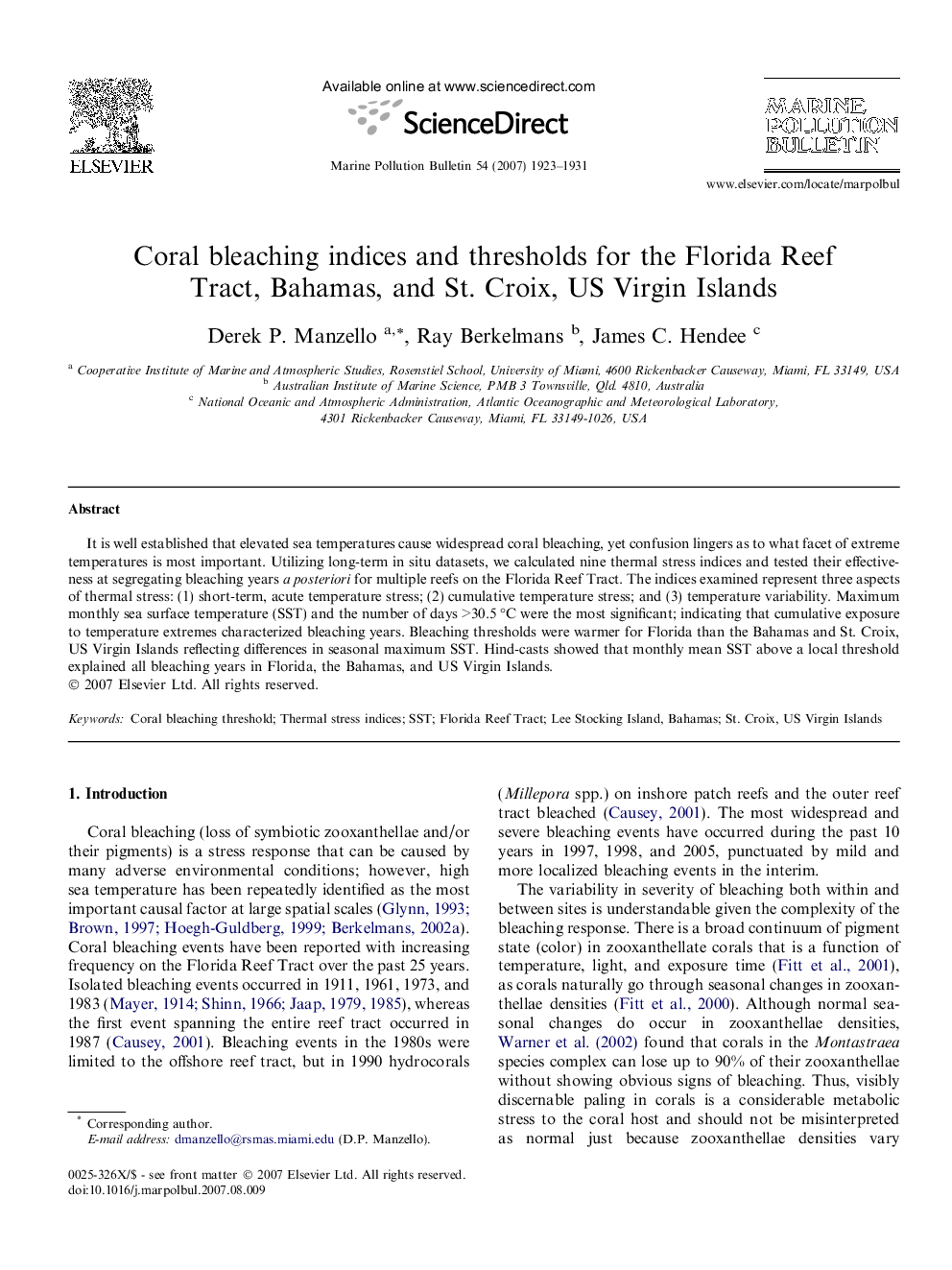| Article ID | Journal | Published Year | Pages | File Type |
|---|---|---|---|---|
| 4477709 | Marine Pollution Bulletin | 2007 | 9 Pages |
It is well established that elevated sea temperatures cause widespread coral bleaching, yet confusion lingers as to what facet of extreme temperatures is most important. Utilizing long-term in situ datasets, we calculated nine thermal stress indices and tested their effectiveness at segregating bleaching years a posteriori for multiple reefs on the Florida Reef Tract. The indices examined represent three aspects of thermal stress: (1) short-term, acute temperature stress; (2) cumulative temperature stress; and (3) temperature variability. Maximum monthly sea surface temperature (SST) and the number of days >30.5 °C were the most significant; indicating that cumulative exposure to temperature extremes characterized bleaching years. Bleaching thresholds were warmer for Florida than the Bahamas and St. Croix, US Virgin Islands reflecting differences in seasonal maximum SST. Hind-casts showed that monthly mean SST above a local threshold explained all bleaching years in Florida, the Bahamas, and US Virgin Islands.
